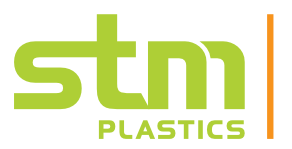Understanding Thermoforming for Large Parts
Thermoforming is a popular manufacturing process used to create a wide array of plastic products, from simple packaging solutions to complex parts used in various industries. One of the standout capabilities of thermoforming is its ability to produce unusually large parts, which can measure up to 8 feet by 10 feet. This makes it a particularly valuable technique for applications that require substantial components.
What is Thermoforming?
Thermoforming involves heating a flat sheet of plastic until it becomes soft and pliable. Once heated, the plastic is stretched over a mold or into a form. A vacuum is often used to suck the air out from between the mold and the plastic sheet, ensuring the material conforms precisely to the shape of the mold. After the plastic cools and solidifies, it retains the shape of the mold. The excess plastic is then trimmed away, and the finished part is ready for use.
Benefits of Large Part Thermoforming
- Versatility: Thermoforming is incredibly versatile, allowing for the creation of parts with complex shapes and sizes. This flexibility is particularly beneficial for industries like automotive, where large, lightweight parts such as door panels or dashboards are needed.
- Cost-Effectiveness: When it comes to making large parts, thermoforming is more cost-effective than other manufacturing processes like injection molding. The tooling (molds and forms) used in thermoforming is less expensive to produce, especially for large dimensions. This makes it ideal for both prototype development and full-scale production.
- Speed: Thermoforming allows for quicker setup and turnaround times compared to other methods. This speed is crucial for companies that need to get their products to market quickly or require rapid prototyping.
- Quality and Precision: Despite its speed and cost-effectiveness, thermoforming does not sacrifice quality. The process can achieve excellent detail and precision, ensuring that even large parts meet strict specifications and high-quality standards.
Applications of Large Part Thermoforming
The ability to thermoform large parts is extensively utilized in several sectors. In the automotive industry, large panels, bumpers, and trims are commonly produced using this method. The recreational vehicle (RV) industry also benefits greatly, using thermoformed parts for exterior body panels and interior features. Additionally, the aerospace sector uses thermoformed parts for cabin components and other structural elements.
Conclusion
Thermoforming stands out as an excellent choice for producing large, high-quality plastic parts. Its versatility, cost-effectiveness, and speed make it an attractive option for a variety of industries requiring substantial components. Whether for automotive, aerospace, or commercial applications, thermoforming offers a reliable and efficient solution for manufacturing large-scale products.
STM Plastics specializes in plastic thermoforming, a process ideal for creating both simple and complex plastic products. Our technique involves heating a plastic sheet until pliable, then shaping it with advanced molds. This process is particularly effective for high-quality, small-batch productions and short runs, making STM an excellent partner for projects that require quick turnarounds and specialized attention.
STM stands out for our efficient and cost-effective tooling, which offers quicker preparation times and lower costs than many other manufacturing processes. This efficiency makes us a top choice for prototyping and manufacturing large parts up to 10 feet in length. Moreover, STM supports our clients from start to finish, providing expert advice on material selection to ensure the final product meets all necessary specifications for its intended use.
Contact us today to see if we can help with your next thermoforming project!


Leave a Reply
Want to join the discussion?Feel free to contribute!